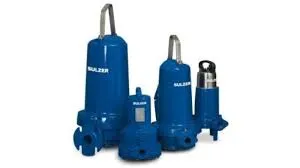Finnish
- Afrikaans
- Albanian
- Amharic
- Arabic
- Armenian
- Azerbaijani
- Basque
- Belarusian
- Bengali
- Bosnian
- Bulgarian
- Catalan
- Cebuano
- Corsican
- Croatian
- Czech
- Danish
- Dutch
- English
- Esperanto
- Estonian
- Finnish
- French
- Frisian
- Galician
- Georgian
- German
- Greek
- Gujarati
- Haitian Creole
- hausa
- hawaiian
- Hebrew
- Hindi
- Miao
- Hungarian
- Icelandic
- igbo
- Indonesian
- irish
- Italian
- Japanese
- Javanese
- Kannada
- kazakh
- Khmer
- Rwandese
- Korean
- Kurdish
- Kyrgyz
- Lao
- Latin
- Latvian
- Lithuanian
- Luxembourgish
- Macedonian
- Malgashi
- Malay
- Malayalam
- Maltese
- Maori
- Marathi
- Mongolian
- Myanmar
- Nepali
- Norwegian
- Norwegian
- Occitan
- Pashto
- Persian
- Polish
- Portuguese
- Punjabi
- Romanian
- Russian
- Samoan
- Scottish Gaelic
- Serbian
- Sesotho
- Shona
- Sindhi
- Sinhala
- Slovak
- Slovenian
- Somali
- Spanish
- Sundanese
- Swahili
- Swedish
- Tagalog
- Tajik
- Tamil
- Tatar
- Telugu
- Thai
- Turkish
- Turkmen
- Ukrainian
- Urdu
- Uighur
- Uzbek
- Vietnamese
- Welsh
- Bantu
- Yiddish
- Yoruba
- Zulu
Telephone: +86 13120555503
Email: frank@cypump.com
joulu . 24, 2024 11:12 Back to list
pipeline pumping
Pipeline Pumping A Critical Component of Modern Infrastructure
Pipeline pumping is an essential process that facilitates the transportation of fluids—such as water, oil, gas, and various chemicals—over long distances. Given its integral role in various industries, understanding the mechanisms, technologies, and challenges associated with pipeline pumping is crucial for ensuring efficiency, safety, and environmental protection.
At its core, pipeline pumping involves moving fluids through a network of pipes using pumps. These pumps are vital components in the pipeline system, providing the necessary pressure to overcome friction losses and elevation changes along the route. The choice of pump largely depends on the fluid's properties, the distance it needs to be transported, and the terrain it must traverse. Common types of pumps used in pipeline operations include centrifugal pumps, positive displacement pumps, and submersible pumps, each with specific advantages suited for different scenarios.
Centrifugal pumps are widely used in applications where high flow rates are necessary. They work by converting mechanical energy into hydraulic energy using a rotating impeller. In contrast, positive displacement pumps move fluids by trapping a fixed amount and forcing it into the discharge pipe, making them ideal for high-viscosity fluids or systems requiring precise flow control. Understanding these distinctions is vital for engineers and operators in selecting the appropriate pumping solutions for their specific needs.
One of the significant challenges in pipeline pumping is maintaining efficiency. Factors such as pipe diameter, fluid temperature, and viscosity can affect the overall efficiency of the pumping system. Engineers must carefully design the pipeline layout, including considerations for pump placement and pipe materials, to minimize energy losses. Additionally, the integration of modern technologies, such as variable frequency drives (VFDs) and real-time monitoring systems, has revolutionized the way operators control pumps and optimize energy consumption.
pipeline pumping

Environmental concerns are also paramount in the context of pipeline pumping. Leaks or spills can have devastating effects on ecosystems and communities. As a result, regulatory frameworks mandate rigorous safety standards and monitoring practices. This includes the use of advanced materials that resist corrosion, regular inspections, and the implementation of spill response plans. New technologies, such as smart sensors and artificial intelligence, are increasingly being deployed to detect leaks early and ensure rapid response to any incidents.
Moreover, the role of pipeline pumping extends beyond mere transportation; it influences economic factors and energy security. In the oil and gas industry, efficient pipeline systems are critical for the timely delivery of products to markets. Energy producers rely on these systems to maintain supply chains and meet demand, affecting everything from local economies to global markets. As renewable energy sources become more prominent, pipeline pumping is also adapting to accommodate biofuels and other alternative fuels, highlighting the need for versatility in infrastructure.
The ongoing evolution of pipeline pumping technology underscores its importance in a rapidly changing world. Innovations in materials science, automation, and digital technologies are driving improvements in efficiency, safety, and sustainability. For example, the development of composite materials for pipes can reduce weight and increase resistance to corrosive substances, while advancements in data analytics enable predictive maintenance, minimizing downtime and maximizing operational efficiency.
In conclusion, pipeline pumping is a multifaceted process that plays a critical role in modern infrastructure. It is essential for the efficient and safe transport of various fluids, influencing economic viability and environmental safety. As industries evolve and new technologies emerge, the future of pipeline pumping will likely see even greater innovations that enhance operational capabilities and sustainability, ensuring that this vital infrastructure continues to meet the demands of a globalized world.
-
Heavy-Duty Mining Sludge Pumps - Wear-Resistant Slurry Handling
NewsAug.02,2025
-
Horizontal Split Case Pump with GPT-4 Turbo | High Efficiency
NewsAug.01,2025
-
ISG Series Pipeline Pump - Chi Yuan Pumps | High Efficiency, Durable Design
NewsAug.01,2025
-
Advanced Flue Gas Desulfurization Pump with GPT-4 Turbo | Durable & Efficient
NewsJul.31,2025
-
ISG Series Vertical Pipeline Pump - Chi Yuan Pumps | Advanced Hydraulic Design&Durable Construction
NewsJul.31,2025
-
ISG Series Vertical Pipeline Pump - Chi Yuan Pumps | Energy Efficient & Low Noise
NewsJul.31,2025










